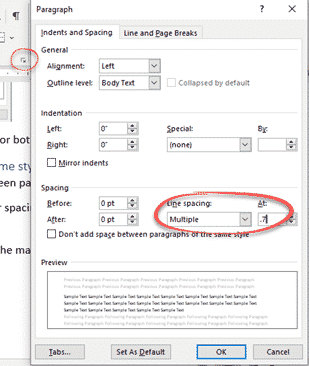Work On Microsoft Publisher File On Mac
- Work On Microsoft Publisher File On Mac Windows 10
- Work On Microsoft Publisher File On Mac Word
- Work On Microsoft Publisher File On Mac Software
- Open A Microsoft Publisher File On Mac
As one of the most widely used layout programs in the world, Microsoft Publisher is beginner-friendly and lets virtually anyone design a variety of marketing materials, whether for web or print, with ease. Its tight integration with Office 365 contributes to it being the default choice for many when it comes to design software as well.
Converting/transferring files from Windows to Mac (MS Publisher to iWork Pages, etc.) MacStartup Posted on by Kevin Cullis For all intents and purposes, iWork Pages is the equivalent of MS Publisher on the Mac.
However, if you’ve recently switched from Windows to macOS and installed your favorite Microsoft software, you might have noticed that Microsoft Publisher is absent from the app lineup. How could it be? Is there Microsoft Publisher for Mac? What do you use instead? Let’s tackle all these questions one by one.
- Data provided through the use of this store and this app may be accessible to Microsoft or the third-party app publisher, as applicable, and transferred to, stored, and processed in the United States or any other country where Microsoft or the app publisher and their affiliates or service providers maintain facilities.
- The most up-to-date version of Microsoft Publisher is always available with an Office 365 subscription. Publisher 2019 is the latest classic version of Publisher. It is a one-time purchase that does receive updates. Previous versions include Publisher 2016, Publisher 2013, Publisher 2010, Publisher 2007, and Publisher 2003.
Get a publisher for Mac
Work On Microsoft Publisher File On Mac Windows 10
Microsoft Publisher doesn't work on Mac. But Setapp has an equivalent you'll enjoy even more.
Is Microsoft Publisher Available For Mac?
As the official Microsoft website indicates, Microsoft Publisher is available for PC only. But that shouldn’t discourage you in the slightest. After all, the key value proposition of Mac computers for the longest time has been an abundance of platform-specific designer-oriented software.
Not only there are lots of Microsoft Office Publisher for Mac alternatives — they are generally more intuitive and focused on getting the professional results you’re after much quicker. One of those options is Swift Publisher.
Create astonishing layouts with Swift Publisher
What exactly is a Microsoft Publisher equivalent for Mac? There are certain tools that professional full-time designers use to create books, brochures, and printed advertising. Generally, those apps take hundreds of hours to get a grasp of and, even after you know them quite well, demand highly manual approach.

The other category is software that was designed to be accessible to all but which is still capable of producing results comparable to its highly specialized alternatives. Microsoft Publisher is certainly in that camp, and by comparison Swift Publisher is too.
Swift Publisher provides you with more than 200 templates and 2,000 royalty-free images right from the get-go. That means whatever you’re planning to design has already been mocked up and all the media you need can be found with a quick search, no purchase required. To accompany all these images, the app also features a built-in image editor you can use for any necessary cropping or color correction.
Building out your perfect layout in Swift Publisher couldn’t be easier, as the whole interface operates on a drag-and-drop functionality to enable you to fill out the template you’ve chosen at the beginning. You can also change the template yourself with regards to master pages, grid, layers, tables, and more.
Unlike Microsoft Publisher for Mac, Swift Publisher makes full use of programmatic automation. For example, calendars and maps can be added in a snap to show timelines and directions. Contacts can be merged from Apple’s address book to output names. New QR codes can be created to guide users to where you want them to go.
Printing your project has never been so seamless. First you can simply check out the layout integrity by printing samples at home. When you get the result you seek, the app allows you to further fine-tune the image resolution, mark bleeds, and customize anything else required by your commercial printer.
As you can see, the inability to download Microsoft Publisher for Mac shouldn’t affect your need for creative expression. Swift Publisher offers all the same features and more in a convenient and approachable package. But what if someone sends you a .pub file Macs can’t read? There are workarounds for that too.
How to open a .pub file on Mac
It’s true that none of Mac’s default apps would be able to peek inside the .pub file, simply due to how closed the Microsoft ecosystem is. Luckily, it’s less of a problem than it seems. A quick search online would reveal dozens of free web-based utilities that instantly convert Publisher files into PDFs, .docx, .png, etc.
Alternatively, you can notify your team of your recent switch to Mac and ask them to export .pub files to another format before those get sent to you. To do that your colleagues need to go to File then Export then Change File Type.
Most likely, all the files you’ll receive from now on would be PDFs, which are great, as they preserve the original formatting and can be read by any program that deals with images. With time though you’ll accumulate hundreds of PDF files, so your new challenge will be finding the right one quickly. That’s where PDF Search comes to the rescue.
PDF Search is a powerful utility that first and foremost scans any folder on your Mac for PDFs and then uses its AI capabilities to work with them. This app doesn’t just search for a word or phrase, it also analyzes a variety of semantically related keyword combinations and ranks them for you based on relevancy. To put it simply, there has never been an easier way to scan your PDFs.
Publish flawless blog posts on the web
A frequently overlooked use case for Microsoft Publisher is laying out the content for the web, whether it’s a website or complex blog post. And while Swift Publisher is an outstanding tool for creating website mockups, it would seem like an overkill to use it for putting together a blog post. Working with a single-focused app like MarsEdit would make so much more sense.
MarsEdit is a lightweight but powerful all-in-one blogging tool. It lets you write, design, optimize, and publish outstanding blog posts using a single workflow, and thus saving time and reducing errors in the process.
When you launch MarsEdit for the first time, it asks you to connect the app to your existing blog, whether it’s on WordPress, Blogger, or Medium, so that it can import all your settings and configure the publishing process. That way, MarsEdit will also become the de facto content management system for your website — good news, as keeping a copy of all your posts offline certainly wouldn’t hurt.
Writing in MarsEdit is straightforward and distraction-free. You can also copy-paste the text from another app and even retain the Markdown syntax. Adding media is the best part, as MarsEdit supports a variety of image engines and even features a native image editor to make all the necessary adjustments. What’s more, the app can scan Apple Photos, Lightroom, and Aperture for images.
You also get to preview your resulting blog posts in real time to avoid after-the-fact tweaking. And if you have more than one blog, you can simply switch accounts right within the app. To sum up, MarsEdit is exactly the software web publisher have been waiting for.
Despite the fact that there is no official Microsoft Office Publisher for Mac, you’re not left without tools that are crucial for your success. In fact, it’s quite the opposite. Lots of apps could be called a Microsoft Publisher equivalent for Mac. Your task now is to pick the right one. Swift Publisher does the trick for nearly every use case, and MarsEdit effortlessly takes care of your web presence. Finally, in case someone sends you .pub file Macs can’t read, search online to resolve the issue and try any top-ranking utility.
Best of all, both Swift Publisher and MarsEdit are available for a free trial through Setapp, a platform of more than 150 highly acclaimed apps and utilities for any situation. Become a Setapp Member today and download Microsoft Publisher for Mac alternatives you want to try.
When switching from Office for Windows to Office for Mac, you’ll discover that you can’t open Microsoft Publisher files in Office 2011 for Mac. You need to convert your Publisher files to Word (.docx) format by using Microsoft Office on a PC. After that, you can move those Word files to Office for Mac.
Work On Microsoft Publisher File On Mac Word
When you open the Word file from Windows on your Mac, the result won’t be perfect. You have to recreate the links between the text boxes, and the layout may need tweaking, but this is the best way to migrate Publisher files.
To convert a Publisher document to Word in Office 2010 on Windows, do the following:
Work On Microsoft Publisher File On Mac Software
Open the document you want to convert using Microsoft Publisher 2010 for Windows.
Press Ctrl-A to select all the content.
Press Ctrl-C to copy all the content to the Windows Clipboard.
Open a new, blank Microsoft Word 2010 document.
Press Ctrl-V to paste the Clipboard contents into Word.
Click the Save button on the Quick Access Toolbar.
The resulting Word (.docx) file can now be moved to your Mac.

If you’re moving other types of files from Office for Windows to Office 2011 for Mac, you shouldn’t experience many hiccups. Because the file formats for Microsoft Word, Excel, and PowerPoint are identical on both Macs and PCs, no file conversions are needed. After you copy your files from your PC and move them to your Mac, you can — with very few exceptions — simply open your documents and templates in Office 2011.
Open A Microsoft Publisher File On Mac
Files that contain properly written add-ins and macros should also work. Macros and add-ins that use Windows platform-specific code don’t work, but you usually can modify them to work in Office 2011.
